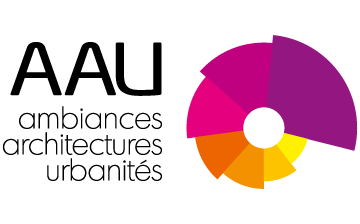L’urbain et la mort : ambiances d’une relation
Death and the city
THIOLLIERE Pascaline - Thèse de doctorat soutenue en 2016
Encadrement : G. Chelkoff
FR
RESUME
La ritualité funéraire est en France depuis le tournant du 21ème siècle en profonde transformation, ce qui interroge fortement la relation entre la ville et la mort. Un certain rejet du cimetière standardisé et de ses contraintes s’exprime par le recours toujours plus fréquent à la crémation et à la dispersion. La matérialité de la cendre amène à une dématérialisation et une localisation plus diffuse des morts. Celles-ci sont renforcées par l’usage croissant de supports numériques (page memorial, réseaux sociaux, cimetières virtuels) qui ouvrent de nouveaux espaces-temps pour l’entretien de la relation aux morts et participent à redéfinir la spatialité du deuil. En outre, les considérations écologiques se révèlent aujourd’hui structurantes et bouleversent le domaine du funéraire tant au niveau pratique qu’au niveau des représentations.
Nous faisons l’hypothèse que le tissage de notre relation aux morts passe par le corps, par ses mouvements et ses gestes qui matérialisent et donnent une ambiance à cette relation. Ainsi, à partir de cette approche sensible des ambiances, les dispositifs construits et paysagers sont appréhendés comme des mises en condition spatiales, temporelles, mais aussi corporelles, qui participent à la construction de la relation à la mort et aux morts et façonnent en partie le vécu intime du deuil. Les seuils, les rythmes et les gestes en jeu dans l’espace urbain sont des leviers pour la connaissance et la conception des relations entre l’urbain et la mort.
En ce sens, nous identifions des intentionnalités particulièrement relevantes dans l’expérience du deuil (accompagner, entretenir, se recueillir, cheminer), qui sont mises en rapport avec les possibilités d’actions liées à l’espace construit et paysager. Ce travail permet de révéler des manques et des ressources, et ainsi, d’envisager le renouvellement des critères sur lesquels s’appuie la conception des espaces de la mort à l’échelle architecturale et urbaine.
ABSTRACT
Since the turn of the 21st century, the funeral rituality in France undergoes a profound transformation that strongly questions the relationship between death and the city. The more frequent practices of cremation and ashes scattering express a rejection of cemeteries standardisation and constraints. The materiality of the ash leads to dematerialisation and more diffuse localisation of the dead. These are reinforced by the increasing use of digital media (memorial pages, social networks, virtual cemeteries) that open a new space-time framework for sustaining the relationship to the dead and participate in redefining the spatiality of grief. In addition, environmental considerations reveal today a new deviation in the field of funerary both in practice and at the level of representation.
We assume that weaving our relationship to the dead passes across the body, its movements and gestures that materialise that relationship while creating a special ambiance. Therefore, from this sensory approach dealing with urban ambiances, constructed and landscaped arrangements are perceived as a way for setting the conditions on spatial, temporal and bodily levels, that participate in establishing the relationship to death and the dead, and partly shape the intimate experience of mourning. Thresholds, rhythms and gestures captured in urban spaces are levers for understanding and designing the relationship between death and the city.
In this sense, we identify certain intentionalities that are particularly relevant for the experience of mourning (accompany/support, maintain/sustain, reflect/meditate, travel/progress), which are seen in the light of action possibilities related to the built and landscaped environment. This work helps to highlight the different gaps and resources, and to consider renewing the criteria upon which the design processes of spaces related to death on architectural and urban scales is based.
EN
Since the turn of the 21st century, the funeral rituality in France undergoes a profound transformation that strongly questions the relationship between death and the city. The more frequent practices of cremation and ashes scattering express a rejection of cemeteries standardisation and constraints. The materiality of the ash leads to dematerialisation and more diffuse localisation of the dead. These are reinforced by the increasing use of digital media (memorial pages, social networks, virtual cemeteries) that open a new space-time framework for sustaining the relationship to the dead and participate in redefining the spatiality of grief. In addition, environmental considerations reveal today a new deviation in the field of funerary both in practice and at the level of representation.
We assume that weaving our relationship to the dead passes across the body, its movements and gestures that materialise that relationship while creating a special ambiance. Therefore, from this sensory approach dealing with urban ambiances, constructed and landscaped arrangements are perceived as a way for setting the conditions on spatial, temporal and bodily levels, that participate in establishing the relationship to death and the dead, and partly shape the intimate experience of mourning. Thresholds, rhythms and gestures captured in urban spaces are levers for understanding and designing the relationship between death and the city.
In this sense, we identify certain intentionalities that are particularly relevant for the experience of mourning (accompany/support, maintain/sustain, reflect/meditate, travel/progress), which are seen in the light of action possibilities related to the built and landscaped environment. This work helps to highlight the different gaps and resources, and to consider renewing the criteria upon which the design processes of spaces related to death on architectural and urban scales is based.
